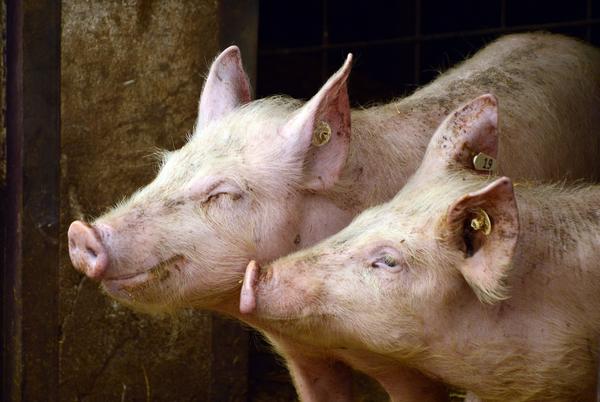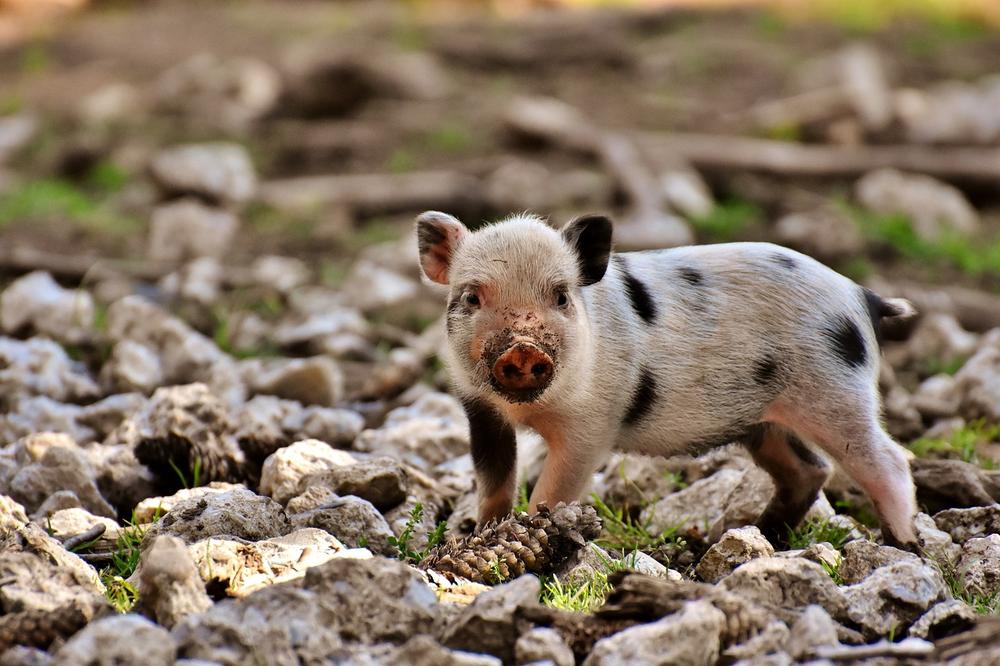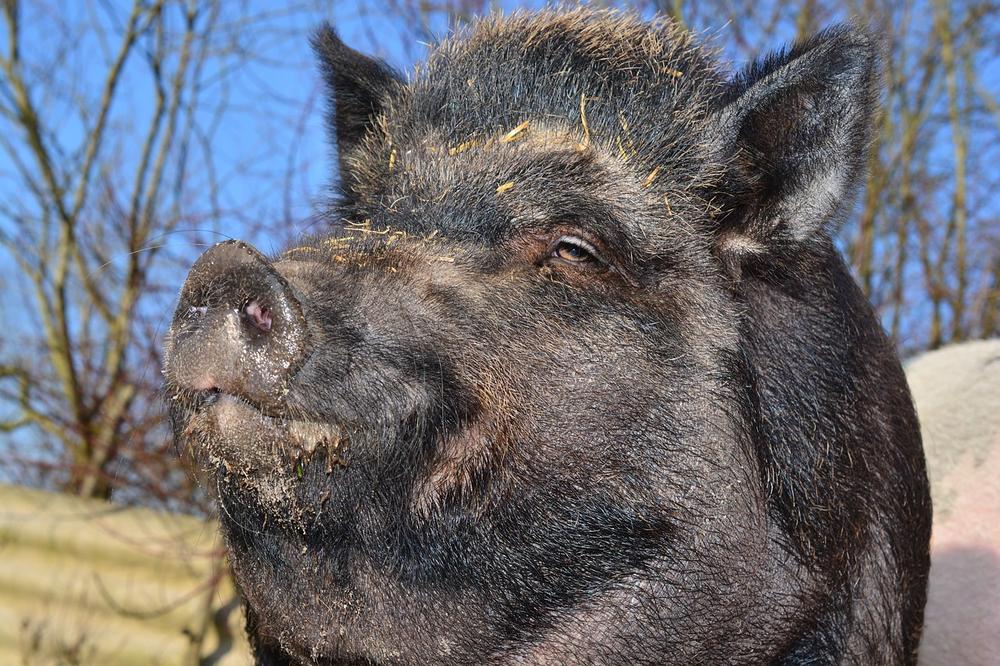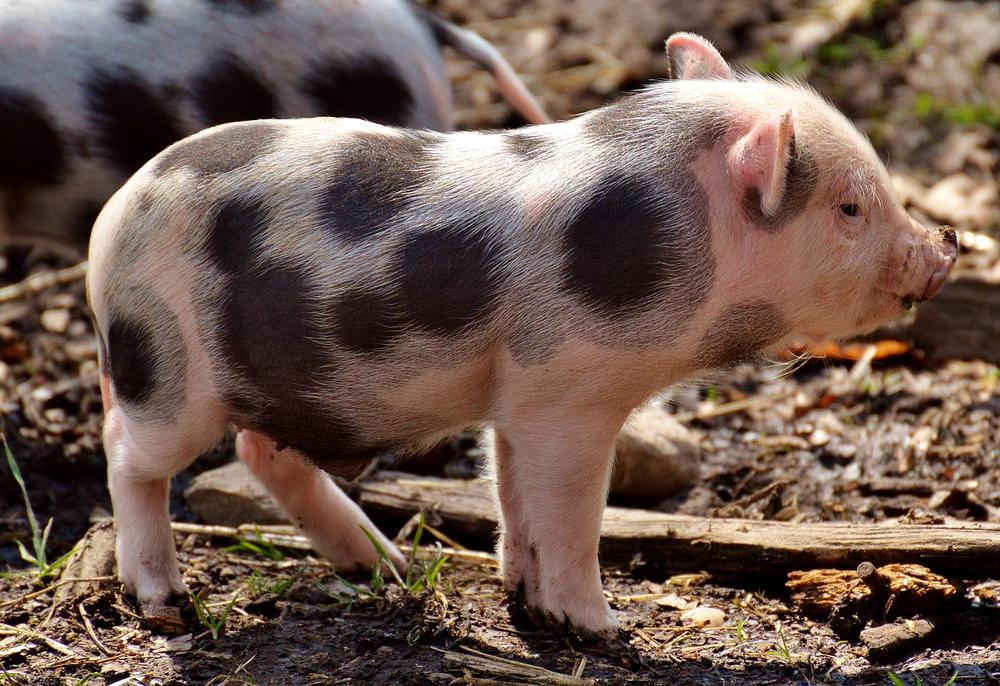When Do Pigs Stop Growing?

Tired of waiting for those little piggies to stop growing?
Wondering when is the right time to call them "fully grown"?
I get it, I've felt the same way. 😊
Well, let me tell you, the answer might surprise you.
Let's dive in.
Factors That Affect a Pig's Growth
You need to know these factors if you want your pigs to grow well:
- The food they eat is important - ensure they have a balanced diet with the right amounts of protein, carbs, and essential nutrients.
- The different phases they go through matter - keep an eye on their health during the transition periods since it can affect their growth.
- Once they become sexually mature at around six months old, their growth slows down. Keep their environment clean and healthy.
- Most market pigs live for about 25 to 28 weeks. During that time, they usually reach a weight of 50 to 60 lbs.
- Around 115 to 120 days old, they move from the nursery to a finishing barn. They eat 6 to 10 lbs. of feed every day during this period.
- Growth is influenced by genetics, breed, diet, and environment. These factors can lead to differences in size.
- Taking care of piglets from birth to weaning is crucial. Good nutrition and management help them grow faster. Piglets are born weighing about 2 to 3 pounds but increase to 13 to 15 pounds after weaning.
- Breeding plays a role too. Selectively breeding pigs helps create desired traits. Different breeds have different characteristics that affect their growth.
- Pregnancy lasts around three months, and the average litter size is 10 to 12 piglets. Gilts become mature and bred when they're about 170 to 220 days old. Pig gestation takes approximately 114 days. Sows and gilts are moved to a farrowing barn when they're ready to give birth, typically having 12 to 13 pigs per litter.
So, understanding these factors is essential for optimal growth and raising healthy pigs.

So, as I have discussed above, understanding the factors that affect a pig's growth is crucial.
But there's more to piglet development than just growth! If you're curious to learn about natural behaviors and weaning practices, I recommend checking out my article, the Piglet Separation Period.
In this guide, I delve into how long piglets stay with their mothers and provide insights into their fascinating behavior during this period.
When Is a Pig Considered Full Grown?
Once a pig reaches around six months old, it has reached its adult size and weight just like you do.
At this stage, they have achieved their full growth potential.

However, as with all living creatures, there comes a time when growth slows down for these cute little oinkers.
For pigs, that happens between the ages of 2 to 3 years. It's during this period that their overall growth ceases, making them fully grown adults.
So remember, just like you, pigs have their own growth journey, but they reach their final destination within a couple of years.
How Fast Pigs Can Grow
| Age | Growth Cycle and Size |
|---|---|
| Birth | Piglets are born small and relatively underdeveloped. |
| Weaning | At around 6-8 weeks old, piglets are weaned from their mother. |
| Juvenile | As piglets enter the juvenile stage, their growth rate slows. |
| Adult | At around 6 months old, pigs reach their market weight. |
My friend, let me enlighten you about the fascinating world of pigs.
I have to say, these little critters are incredible when it comes to growth and development.
Right from the beginning, piglets start packing on the pounds at lightning speed.
In those early weeks of their tiny lives, they gain weight incredibly quickly.
It's mind-boggling, but believe it or not, these small piggies can reach a massive 280 lbs in just six months.
Can you even wrap your head around that?
It's like witnessing an intense growth spurt on steroids!
But hold your horses, we shouldn't rush things here.
In those crucial first few weeks, providing them with proper nutrition is absolutely vital.
You see, piglets require a well-balanced diet packed with all the right nutrients to fuel their growing bodies.
Trust me when I say they need a solid combination of protein, carbohydrates, and healthy fats.
Give 'em what they need, and prepare to be amazed as they grow like there's no tomorrow.
And here's something else you should know - enriching their environment by giving them ample space to roam and engage in natural behaviors is crucial for their all in all well-being as they strive for greatness in the world of hogs.
So keep this in mind: consider pigs as adorable little Arnold Schwarzeneggers.
They experience astonishing growth, indulge in good food, and transform into bundles of pure porky power!
And now that you have marveled at the incredible growth of pigs, let me break it to you gently with a stark reality check about those adorable teacup pig myths.
You see, these little cuties may start off small, but their potential for massive growth is nothing short of mind-blowing!
Realistic Sizes of Mini Pigs
Managing your expectations is crucial when it comes to mini pigs.
Get ready to debunk some of the myths surrounding teacup pigs or super tiny pigs that many people fantasize about. The truth is, these pigs simply do not exist.
While they may start off weighing a modest 2 to 3 pounds at birth, don't let their cute and compact size fool you.
These little piggies have the potential to grow up to a massive 280 pounds!
You ought to understand that mini pigs are not meant to remain small forever. They undergo the same growth cycle as any other pig, just on a smaller scale.

Before deciding to bring home a tiny piglet, evaluate whether you're truly prepared for the responsibilities that come with owning a full-sized pig.
Do you have enough space, time, and resources to accommodate the needs of a growing, hefty pig?
Don't allow the allure of a miniature pig to deceive you.
These lovable oinkers require proper care and attention throughout their entire lives.
That being said, if you're up for the rewarding experience of raising a piggy companion, take the time to do thorough research, locate a reputable breeder, and get ready to welcome an adorable addition to your family.
And now, let's debunk another misconception about mini pigs and delve into the fascinating topic of their lifespan and reproductive cycles!
So, if you're interested in learning more about just how long these adorable oinkers can live and the importance of spaying or neutering them as pets, join me in this next section:
The Lifespan of Mini Pigs and Spaying/Neutering Considerations
Let’s talk about the lifespan of mini pigs and spaying/neutering considerations.
Contrary to popular belief, mini pigs can live a long time – up to an impressive 12-20 years! 😮
So if you’re considering these cute little oinkers as pets, keep in mind that they require a commitment for a good chunk of your life.
That’s why it’s vital to consider whether or not you’ll breed them.
For pet pigs, spaying or neutering is highly recommended (and responsible) if you have no plans of expanding the piggy family.
But before you jump into adopting or buying a mini pig, think about how well they fit into your lifestyle.
They are intelligent, social animals that need plenty of attention, space, and love.
And did you know?
When gilts (that's fancy for "young female pigs") have their first litter, they officially become sows. Just some piggy trivia for you!
Owning a mini pig is a long-term commitment, so make sure you’re ready for the belly rubs, snorts, and unconditional love!
Final thoughts on pig growth and size
Key Takeaways:
- Factors like the growth phases and health monitoring affect pig growth.
- Pigs reach sexual maturity at six months old and stop growing at 2-3 years.
- Maintaining a clean and healthy environment is crucial for pig growth.
- Market pigs grow to an average weight of 50-60 lbs in 25-28 weeks.
- Pigs are transferred to a finishing barn at around 115-120 days old.
- Genetics, breed, diet, and environment influence pigs' growth and development.
- Medical complications can contribute to delayed growth in pigs.
- Care and nutrition play a crucial role in accelerating piglet growth.
- Piglets weigh 2-3 pounds at birth and increase to 13-15 pounds after weaning.
- Pig breeding involves selective breeding for desired traits.
And that's all for today folks.
Before you leave, can I ask you something? Did my blog post turn out helpful for you? If it did, I'd be really grateful if you could share it with your friends and family. Sharing is super easy—just click on any of the social media sharing icons to share instantly. Thank you so much!
Until next time,
-Chris Campbell